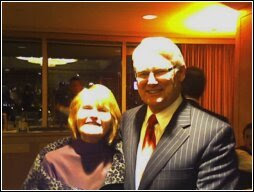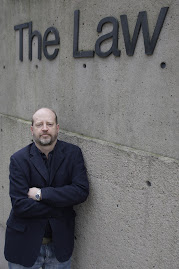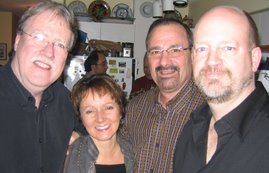No to Proportional Representation in BC
NEWS RELEASE Wednesday February 28, 2018
No BC Proportional
Representation Society makes recommendations on electoral systems referendum
despite “grave worries” on process and results, while rejecting Attorney
General David Eby’s “neutrality” in government public consultation process and
ballot
The No BC Proportional Representation Society has made several strong recommendations to the BC
government public consultation process on the fall referendum on electoral
systems despite “grave worries” about the process and its results, while
rejecting claims by BC Attorney General David Eby of “neutrality” in
supervising the referendum and asking that he remove himself from involvement.
The No BC Proportional
Representation Society intends to: “Campaign vigorously in every part of our
great province to keep the First Past The Post electoral system that has helped
build a strong democracy, an inclusive society and a powerful economy,” it says
in its submission to the consultation process which ends today.
The
key No BC Proportional Representation
Society recommendation
is that in the referendum voters should have two clear choices between: “Our current First Past The Post system and
whatever Proportional Representation system the government recommends. There should not be any ‘two-part’ ballots or
‘ranked ballots’ with multiple choices.”
The No BC Proportional
Representation Society says it agrees with BC NDP Premier John Horgan, who said
before the May 2017 provincial election that: “A consensus on yes or no is pretty
easy. You are going to have 50 per cent
say yes or no.”
Unfortunately, says Bill Tieleman –
a No BC Proportional Representation Society director, the BC government
consultation actually proposed a possible two-part ballot and ranked ballots
with multiple choices that would prevent voters from comparing apples to apples
or ensuring that they have the full information to decide about competing
electoral systems.
“British Columbia voters deserve a
clear choice and an understandable alternative to our current First Past The
Post electoral system, with detailed information about the negative impacts of
potentially dramatic reductions in local, accountable representation,” said
Tieleman, a former BC NDP strategist who successfully led opposition to the
Single Transferable Vote electoral system in the 2005 and 2009 provincial
referenda. “This is a fundamental
question about how British Columbians are governed – and it demands a ballot
question with clarity.”
Attorney General Eby’s involvement
in making recommendations to the BC cabinet about the referendum process and
the ballot question, when he has made public statements supporting Proportional
Representation and campaigned on implementing it mean there is a clear
perception of bias, says Bob Plecas, a No BC Proportional Representation
Society director who served as a deputy minister in many portfolios under
several BC governments.
“We respect Attorney General Eby’s genuinely
held belief in Proportional Representation that he has expressed personally and
as a BC NDP candidate, as is his right,” says Plecas. “But for that very reason, the Attorney
General should not be involved in recommending the ballot question and other
important referendum details – he has already made up his mind and therefore
should remove himself from the process immediately.”
The No BC Proportional
Representation Society also says that the government’s decision to remove
strong consensus requirements for changing electoral systems that previously existed
in BC’s 2009 and 2005 referenda, as well as identical requirements in Ontario
and Prince Edward Island’s referenda in 2007 and 2005, should be reversed.
“Changing our electoral system is a very significant decision that not
only determines how we will be governed indefinitely but also impacts our
economy, our society and our communities,”
says Suzanne Anton, also a No BC
Proportional Representation Society director and former BC Liberal Attorney
General.
“BC should return to the 2009 and
2005 requirement that 60% of voters agree to any change to ensure that we have
a strong, cross-province consensus and that non-urban voters are not unfairly deprived
of their right to local, accountable political representation,” said
Anton. “We also need a requirement that
any change has a 50% plus one majority in favour in at least 60% of BC’s
geographic ridings to again guarantee a significant consensus.”
“The current BC Strata Property Act demands a 75% vote in favour of any
additional expenditures in condominiums – like replacing a furnace – surely
changing BC’s electoral system should require more of a consensus than a bare
minimum of 50% plus one of those who turn out to vote?” asked Anton.
The No BC Proportional
Representation Society also recommends that:
· the ballot question be drawn up by Elections BC to ensure
fairness and neutrality;
· that the term “electoral reform” be dropped from all
government communications due to bias;
· that both sides in the referendum receive public funding of
at least $500,000 each to conduct a province-wide public awareness campaign as
in the 2009 referendum;
· that organizations outside BC be prohibited from funding
either side in the referendum;
· that unions and businesses based in BC be allowed to donate
to either side; and
· that there be no restrictions on third-party advertising by
BC-based organizations on either side.
The full No BC Proportional
Representation Society submission is online now at the BC government website here.
.
































